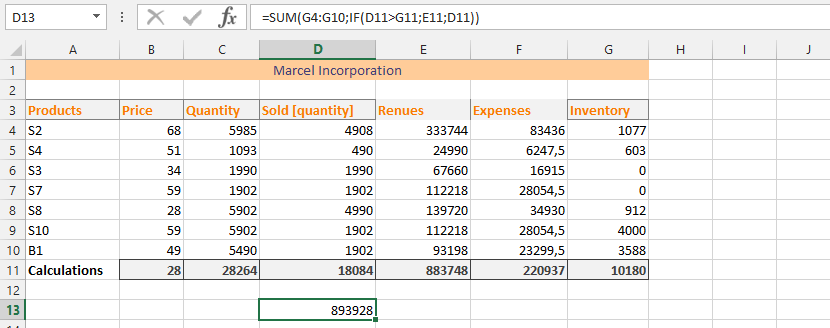IF Function; Understanding It And Different Ways To Use It
Parameter and Arguments
This is how the IF function’s formula looks like:
IF(logical test,value if true,value if false)
Logical test: This is required. The test that a user wants the function to perform.
Value if true: This is optional. It would be the value that a user wants to return, when/if the logical test argument is true. If it is omitted, it would return with
“true”.
Value if false: This is option. It is the value that should return, if a logical test is false. If omitted, “false” would return.
Example 1: Simple IF Formula
This sample is about acknowledging the information that would help the comprehension of a simple IF formula. In this case, we want to know the amount we make from selling a specific product.

Example 2: IF and Average
This is an example that simultaneously uses both the average and if formula.

Example 3: IF and SUM
Usage The issue here is that we would like to know how much the company would make, at a level that addresses the total amount that the company would make, in combination with the quantity of products that we’d have in the inventory.

Example 4: Double IF in one Formula
The formula here is about using two IF formulas together.

Example 5: IF, AVERAGE and SUM
in one Formula This example focuses on combining 3 different formulas into 1 to find a result.

Example 6: IF, MIN and MAX
This example use IF, MIN and MAX formulas to find the answer.

Example 7: IF and Date
This is the usage of IF and Date formula. This sample focuses on how much we’ve made today, if we only focus on a specific price.

Example 8: Double IF in one Formula
This example use two IF formula, because we would like to start a new project that would allow us to cleanse our remaining inventory. It was intended that in the event that we have not sold all the products after a specific period of time, we were going to sell it for a specific amount of money. Usage of double IF formula allow productivity to help determine how much we would make from selling it in a specific project.

Example 9: Net Worth after Expenses
We want to know the profit we would make after paying all expenses, and selling the products at a specific price. This is where we would be using double IF formulas and SUM.

Example 10: SUM and IF
This is the usage of both functions: sum and if – and find the answer that we are looking for.

Template
Further reading: Basic concepts Getting started with Excel Cell References





